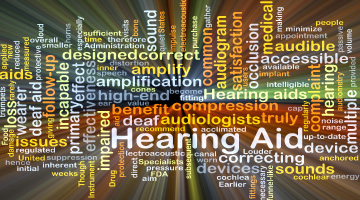 Hearing loss occurs when one or more parts of the ear are temporarily or permanently damaged. There are three types of hearing loss, which are differentiated by the area of the ear where the damage has occurred. In order to effectively treat your hearing loss, your audiologist first must determine what type of hearing loss you have. This can be done through a series of hearing tests. The most common type of hearing loss affects the inner ear and is called sensorineural hearing loss. Conductive hearing loss is less common and is caused by damage to the outer or middle ear. Mixed hearing loss is the least common type of hearing loss in Akron residents and involves a combination of sensorineural and conductive damage.
Hearing loss occurs when one or more parts of the ear are temporarily or permanently damaged. There are three types of hearing loss, which are differentiated by the area of the ear where the damage has occurred. In order to effectively treat your hearing loss, your audiologist first must determine what type of hearing loss you have. This can be done through a series of hearing tests. The most common type of hearing loss affects the inner ear and is called sensorineural hearing loss. Conductive hearing loss is less common and is caused by damage to the outer or middle ear. Mixed hearing loss is the least common type of hearing loss in Akron residents and involves a combination of sensorineural and conductive damage.
Sensorineural Hearing Loss
Sensorineural hearing loss occurs when there is damage to the inner ear (specifically the hair cells of the cochlea), the auditory nerve or the brain’s processing center. Approximately 9 in 10 cases of hearing loss in Akron-area patients are caused by inner ear problems. Sensorineural hearing loss can be mild, moderate, severe or profound and is typically permanent. Most of the time, hearing aids are the best option for treating sensorineural damage. In some cases, however, amplification isn’t effective in treating patients with severe damage to the cochlea. In these circumstances, your audiologist may recommend cochlear implants. The most common causes of sensorineural hearing loss are loud noise exposure and the natural aging process. Other, less common causes include:
- Viral infections
- Injury or trauma
- Hereditary factors
- Ototoxic medications
- Autoimmune disorders
- Certain diseases including Meniere’s
- Malformations of the inner ear
Conductive Hearing Loss
Conductive hearing loss results from damage to the middle or outer ear and is often temporary. It can be caused by a variety of factors including fluid in the middle ear, middle or outer ear infections, allergies, impacted earwax, foreign objects in the ear, Eustachian tube problems, malformations of the outer or middle ear, swimmer’s ear, surfer’s ear and otosclerosis. Most cases of conductive hearing loss cause mild to moderate impairments. Conductive issues are typically treated with medication or nonsurgical procedures, though surgery is occasionally required.
Mixed Hearing Loss
Mixed hearing loss is quite rare and occurs when a patient is suffering from both sensorineural and conductive issues at the same time. Treatment varies depending on the cause and severity of the hearing loss and may include medication, hearing aids, nonsurgical procedures or surgery.


